Health protocols that are applied at Arcus Suites due to COVID-19
Action plan
The Hotel has developed an action plan and individual protocols for each section of the establishment to take measures, prevent and manage suspected Covid-19 cases in order to limit the spread of the virus to staff and guests.
The action plan is conformed by the recommendations of Greece’s public health organization – EODY.
According to the plan, the hotel management has appointed a health coordinator to supervise that protocol is being followed and a doctor on call who will act on the instructions of EODY for testing suspected cases of Covid-19.
Communication
The Hotel informed all stakeholders (employees, guests, contractors, suppliers, visitors and the public) on the measures of its action plan.
Hotel staff
All staff members:
• are aware of how the Covid-19 virus is transmitted and able to provide information to guests.
• are trained on practices for cleaning and disinfecting identified spots, on following hygiene rules to avoid transmitting the virus (frequent hand washing, avoiding handshakes, physical distancing, avoiding contact of hands with eyes, nose and mouth and respiratory hygiene).
• are provided with personal protective equipment (masks, gloves).
• undergo thermal screening every morning.
Reception
• Antiseptic for the guests, next to the hotel entrance.
• Check in και Check out in outside area (when weather conditions allowed it).
• Web – paperless Check in (e-concierge service)
• Frequent disinfection of reception desks.
• Staff members are keeping the appropriate distance (at least 1,5 meters from customers).
• When requested, staff is capable to inform guests on the hotel’s rules and the new measures taken.
• The Hotel provides information leaflets on basic health instructions and useful coronavirus-information for guests through the public screens and room TVs.
• For any case of emergency, a medical kit is available which includes disposable gloves and masks, antiseptics, cleaning wipes, apron, long-sleeved robe and laser thermometer.
• Staff is able to identify symptoms and report them to the health coordinator.
• All key are disinfected.
• Non-hotel guests are prohibited from entering hotels.
• Mandatory extension of duration of check-out and check-in times between stays (check out by 11am and check in from 3pm) so that rooms can be thoroughly cleaned and disinfected and aired out through natural ventilation.
Cleaning, disinfection, housekeeping
• The Hotel implements improved disinfection and deep cleaning practices in accordance to EODY instructions.
• In addition to the normal cleaning procedures, the public areas, the main entrance, reception, door handles, counter tops, tables, handrails, elevator knobs and other “high-frequency “touch points” are being sanitized and disinfected frequently each day.
• Hand sanitizers are present in each public area.
• “Personal” hand sanitizers in each room
• Guest rooms are receiving additional cleaning upon departure, paying particular attention to touch points.
• The daily cleaning and change of sheets, pillowcases and towels is carried out only upon request from guests.
• We have removed from all rooms, every object such as extra pillows, bedding and shared multi-purpose items such as menus, magazines, etc.
• TV and other controls have disposable covers.
• Fabric surfaces (e.g. furniture upholstery) are cleaned with a steam appliance.
• If it is possible due to availability between stays of guests, the rooms remain empty and ventilated for 24 hours.
• Customer information with special marking on when and how the room was cleaned.
Air condition in rooms
• Room individual fan coil air condition filters, has been replaced with new washable.
• Each room has an independent ventilation network. Ventilation systems provide fresh, clean air. Continuous ventilation is performed to prevent virus recurrence.
• Regular maintenance and chemical cleaning of fan coil.
• Continuous filter cleaning.
Public areas
• Social distancing rules applied in public areas include lobby, seating area, outdoor seating, etc.
• Signage and floor markings are present to remind customers to keep their distance from one another.
• Installation of antiseptic solutions in all public areas.
Swimming pool
• Number of bathers: the crowding density in hotel pools is calculated with an index of 5 m2 of water surface per person (total of 8 persons for 40sqm).
• Physical distancing:
• The layout of seats on swimming pool decks (sunbeds, chairs, sun loungers, etc.) should be such so that the distance between the ends of the seats of two people under two different umbrellas be at least 2 meters in each direction.
• All sunbeds seats, tables, personal storage boxes, price lists and any other items should be disinfected after a guest leaves and before used by another guest.
Hotel log book
For public health protection, hotel would keep an updated record of staff members and all guests staying at the hotel – name, nationality, date of arrival and departure, contact details (address, telephone, e-mail), so that communication is possible if a coronavirus case is identified at a later time.
The General Regulation on Personal Data Protection (GDPR) would be observed and all staff members and guests must be informed that their information will be kept on file for reasons of public health protection.
It is necessary to record and update all events that may occur in the log book.
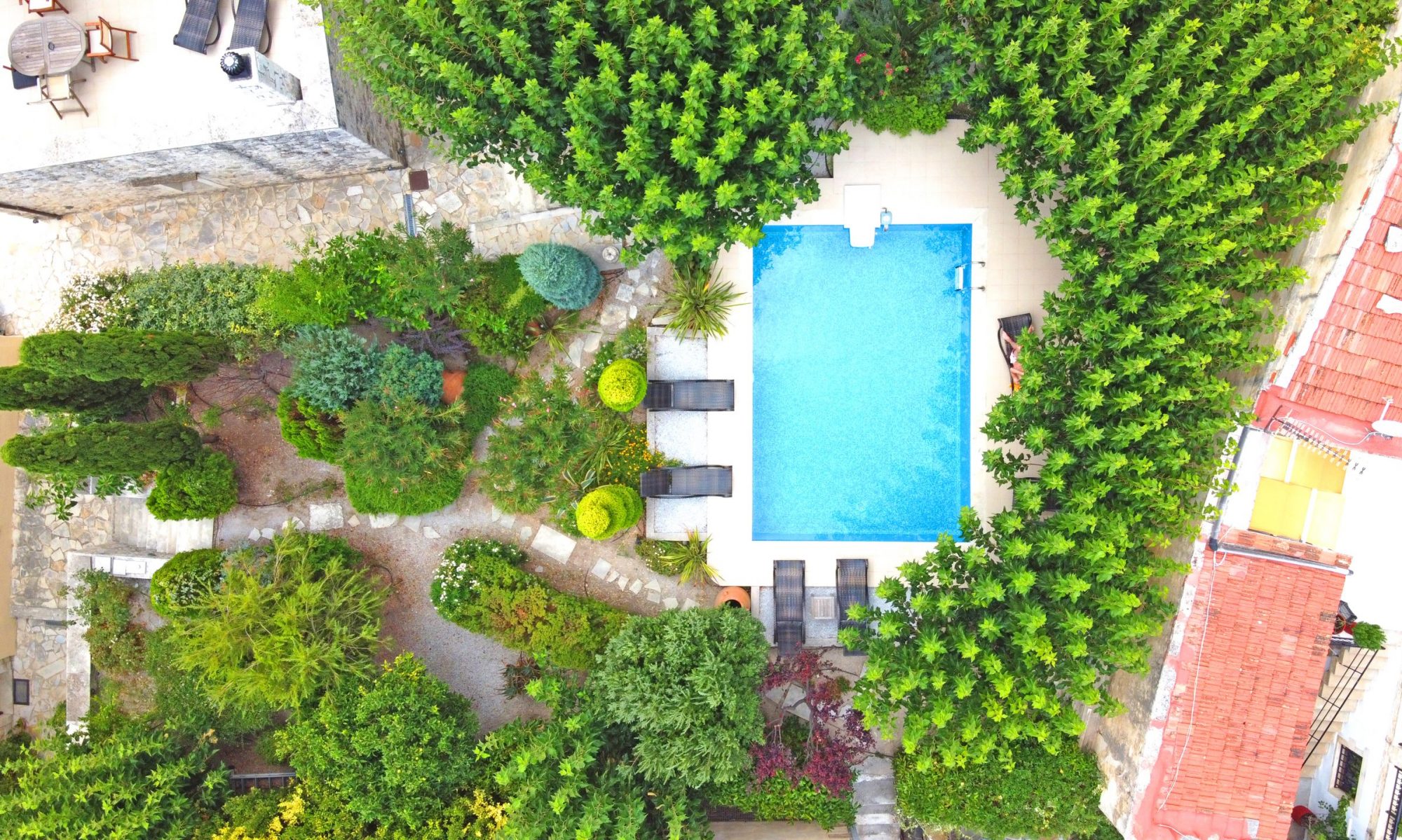

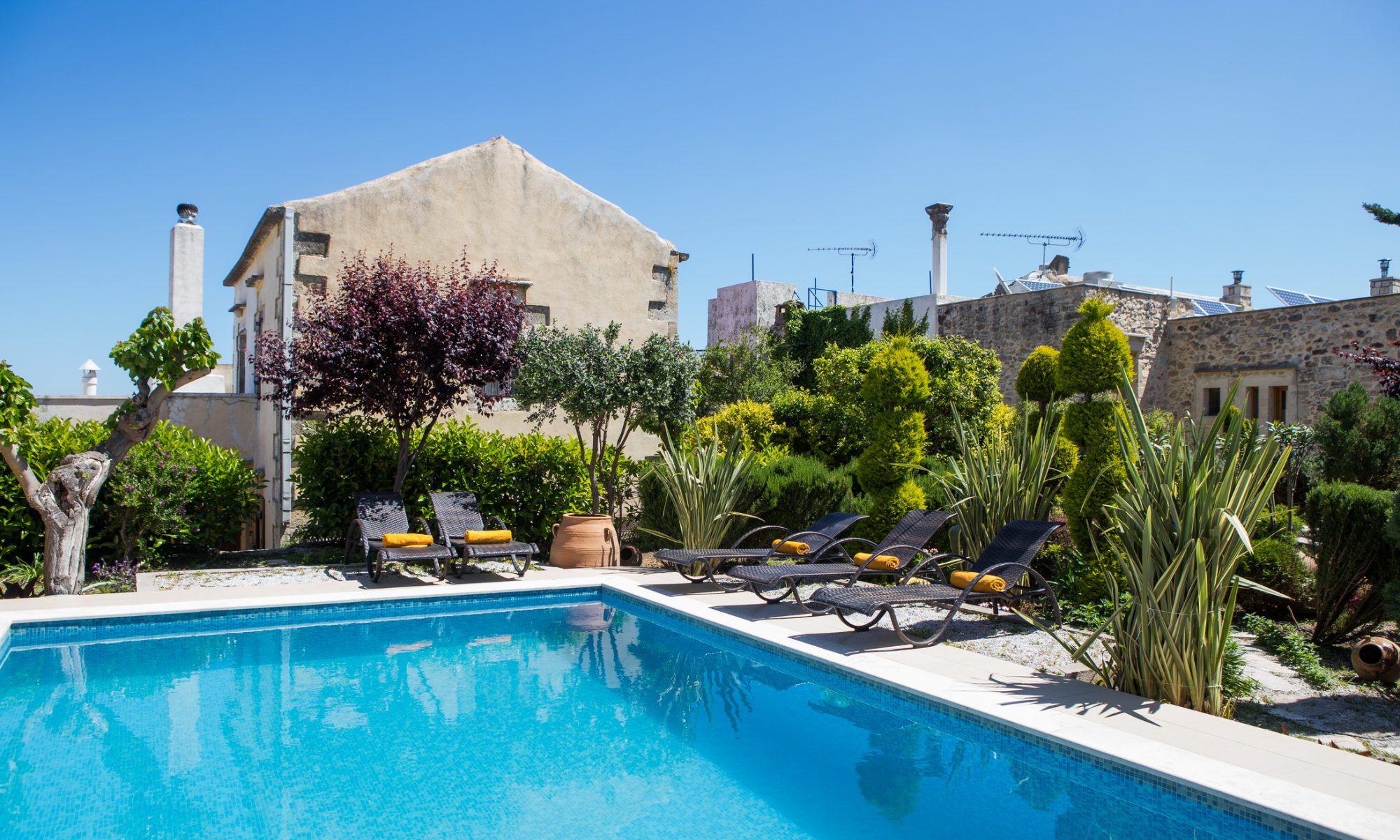
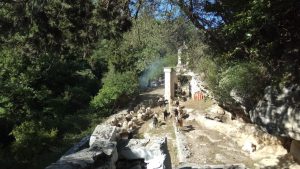 Lappa was an ancient city of Crete, extremely important and the seat of a diocese, which probably included the settlement of Rithymna (today’s Rethymno). It was destroyed by the Arabs in the 9th century AD. Today’s Argyroupoli is built on the same location site, of great historical and archaeological importance. The city of Rethymno is watered from the waters of Argyroupoli, known also as “sources of Agia Dynami” or “Springs of Argyroupoli” or “Argyroupoli waterfalls”.
Lappa was an ancient city of Crete, extremely important and the seat of a diocese, which probably included the settlement of Rithymna (today’s Rethymno). It was destroyed by the Arabs in the 9th century AD. Today’s Argyroupoli is built on the same location site, of great historical and archaeological importance. The city of Rethymno is watered from the waters of Argyroupoli, known also as “sources of Agia Dynami” or “Springs of Argyroupoli” or “Argyroupoli waterfalls”.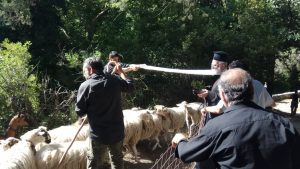 During the Feast of the Five Saints, local shepherds lead their herds to the church location, which are blessed by pastors. Then they milking their sheep and after the end of the Divine Liturgy, they offer the milk to the pilgrims and the visitors, along with a piece of fresh Cretan cream cheese and local treatments. Milk is also sent by many breeders who are unable to attend. In fact, some of them they have arranged (promised) the supply of milk, praying for their flock, especially in cases of illness.
During the Feast of the Five Saints, local shepherds lead their herds to the church location, which are blessed by pastors. Then they milking their sheep and after the end of the Divine Liturgy, they offer the milk to the pilgrims and the visitors, along with a piece of fresh Cretan cream cheese and local treatments. Milk is also sent by many breeders who are unable to attend. In fact, some of them they have arranged (promised) the supply of milk, praying for their flock, especially in cases of illness.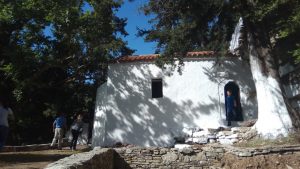 In the same valley, there are five carnivores in a cave, one next to the other, carved in stone, three long and two square, which were monuments to the Lappeans. There, after the destruction of the city during the period of persecution, five virgins, Rodion, Thekla, Mariamni, Anaim and Martha, were martyred, and their bodies were placed in these five sarcophagi.
In the same valley, there are five carnivores in a cave, one next to the other, carved in stone, three long and two square, which were monuments to the Lappeans. There, after the destruction of the city during the period of persecution, five virgins, Rodion, Thekla, Mariamni, Anaim and Martha, were martyred, and their bodies were placed in these five sarcophagi.